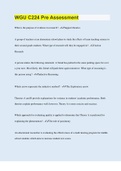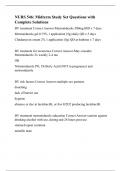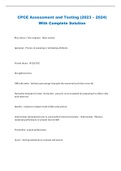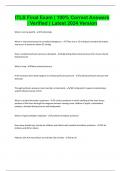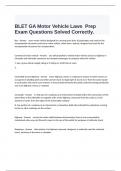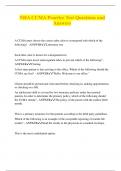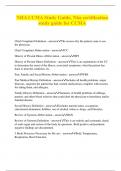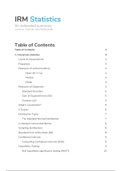lecture 20
correlation does not imply causation
- causal reasoning errors
- counterfactual
beyond correlation does not imply causation
- DAG
john stuart mill
- Priority : change X precedes change Y
- consistency : Change X varies systematically with change Y
- exclusivity : there is no alternative explanation for the relationship
post hoc ergo proper hawk
P X precedes Y
P if X precedes Y, X is the cause of Y
C X is the cause of Y
mistaking correlation for cause
P X correlates with Y
P if X correlates with Y, X is the cause of Y
C X is the cause of Y
inversion of cause and effect
P X causes Y
P if X causes Y, then no Y without X
C without X, no Y
INUS conditions
Insufficient
but
Non-redundant
part of
Unnecessary
but
Sufficient:
condition
checking non redundancy : checking two scenarios, difference in only 1 variable
counterfactual:
, - a perfect counterfactual is knowledge of what would have happened to each
participant if they had not undergone a certain manipulation.
- if we compare that knowledge with what actually happened, we know what the effect
of the manipulation is.
- that perfect variant is physically impossible
>
what to do instead?
> random assignment (randomized control trial)
threats to causality
● History
● Maturation
● Selection
● Attrition
● Instrumentation
● Testing
● Regression to the mean
‘A swamp of ambiguity’
1) ignoring causality
2) statements of causality, but unclear assumptions
3) pseudo-correlational statements (no direct statements, but implied)
DAG
> only interested into controlling for confounder (closing the backdoor)
if all confounders are controlled for, a correlation between treatment and outcome can be
seen as causal.
,which does not mean that the more variables are controlled for, the more accurate the
estimation of the causal effect is (purification principle)
- problem of overcorrection: controlling for mediators on the causal path could lead
to an underestimation of the total causal effect
- collider bias: controlling for common effects will bias the estimation of a causal
relationship between two variables.
confounder
the treatment variable X and the outcome Y can both be caused by third variable Z
> (partial) spurious correlation between X and Y
> even if X and Y actually had nothing to do with each other, they’d be correlated by
Z
it is necessary to condition on Z
mediator
a mediator Z is caused by the treatment variable X and is a cause of the outcome Y
For an estimation of the total effect of X on Y > not condition on Z
For an estimation of the “direct” effect of X on Y, we should condition on Z
controlling for an effect of the mediator is similar to controlling for the mediator itself
collider
if we control for 3th variable, a negative correlation is introduced between X and Y
which isn’t actually there, so we introduce bias
the treatment variable X and the outcome variable Y can both cause a third variable Z
if we condition for Z >
for a pure estimation of the influence of X on Y (assuming no other possible confounders) it
is NOT necessary to condition on Z
(example: length, speed, basketball)
, pay attention!
similar 3th variable could play a different role in different cases (confounder vs collider)
lecture 22
Critical thinking about measurement
mini history of measurement theory
francis galton: measuring humans
charles spearman: the positive manifold (general intelligence > all items correlate
positively)
> psychologists get comfortable using the word “measurement” in research
some audacious psychologists hold that there is no essential difference between physics
and psychology
> psychophysics researchers like SS stevens use the logic of measurement to asses “just
notable differences” as a measure of “subjective loudness”
Campbell: The physicists get involved “you cannot just use the word measurement”
measurement is the result of a process of assigning numbers such that:
- each object is represented by a single number
- the sum of the two assigned numbers represents the result of an empirical
combination of objects (laying two rods end-to-end, or putting two masses in one arm
of a pan balance)
- this is known as a concatenation operation
concatenation = the action of linking things together in a series, or the condition of being
linked in such a way.
measurement validity = the extent to which the data or results of a research method
represent the intended variable
fundamental measurement = measurement which is not derived from other measurements
correlation does not imply causation
- causal reasoning errors
- counterfactual
beyond correlation does not imply causation
- DAG
john stuart mill
- Priority : change X precedes change Y
- consistency : Change X varies systematically with change Y
- exclusivity : there is no alternative explanation for the relationship
post hoc ergo proper hawk
P X precedes Y
P if X precedes Y, X is the cause of Y
C X is the cause of Y
mistaking correlation for cause
P X correlates with Y
P if X correlates with Y, X is the cause of Y
C X is the cause of Y
inversion of cause and effect
P X causes Y
P if X causes Y, then no Y without X
C without X, no Y
INUS conditions
Insufficient
but
Non-redundant
part of
Unnecessary
but
Sufficient:
condition
checking non redundancy : checking two scenarios, difference in only 1 variable
counterfactual:
, - a perfect counterfactual is knowledge of what would have happened to each
participant if they had not undergone a certain manipulation.
- if we compare that knowledge with what actually happened, we know what the effect
of the manipulation is.
- that perfect variant is physically impossible
>
what to do instead?
> random assignment (randomized control trial)
threats to causality
● History
● Maturation
● Selection
● Attrition
● Instrumentation
● Testing
● Regression to the mean
‘A swamp of ambiguity’
1) ignoring causality
2) statements of causality, but unclear assumptions
3) pseudo-correlational statements (no direct statements, but implied)
DAG
> only interested into controlling for confounder (closing the backdoor)
if all confounders are controlled for, a correlation between treatment and outcome can be
seen as causal.
,which does not mean that the more variables are controlled for, the more accurate the
estimation of the causal effect is (purification principle)
- problem of overcorrection: controlling for mediators on the causal path could lead
to an underestimation of the total causal effect
- collider bias: controlling for common effects will bias the estimation of a causal
relationship between two variables.
confounder
the treatment variable X and the outcome Y can both be caused by third variable Z
> (partial) spurious correlation between X and Y
> even if X and Y actually had nothing to do with each other, they’d be correlated by
Z
it is necessary to condition on Z
mediator
a mediator Z is caused by the treatment variable X and is a cause of the outcome Y
For an estimation of the total effect of X on Y > not condition on Z
For an estimation of the “direct” effect of X on Y, we should condition on Z
controlling for an effect of the mediator is similar to controlling for the mediator itself
collider
if we control for 3th variable, a negative correlation is introduced between X and Y
which isn’t actually there, so we introduce bias
the treatment variable X and the outcome variable Y can both cause a third variable Z
if we condition for Z >
for a pure estimation of the influence of X on Y (assuming no other possible confounders) it
is NOT necessary to condition on Z
(example: length, speed, basketball)
, pay attention!
similar 3th variable could play a different role in different cases (confounder vs collider)
lecture 22
Critical thinking about measurement
mini history of measurement theory
francis galton: measuring humans
charles spearman: the positive manifold (general intelligence > all items correlate
positively)
> psychologists get comfortable using the word “measurement” in research
some audacious psychologists hold that there is no essential difference between physics
and psychology
> psychophysics researchers like SS stevens use the logic of measurement to asses “just
notable differences” as a measure of “subjective loudness”
Campbell: The physicists get involved “you cannot just use the word measurement”
measurement is the result of a process of assigning numbers such that:
- each object is represented by a single number
- the sum of the two assigned numbers represents the result of an empirical
combination of objects (laying two rods end-to-end, or putting two masses in one arm
of a pan balance)
- this is known as a concatenation operation
concatenation = the action of linking things together in a series, or the condition of being
linked in such a way.
measurement validity = the extent to which the data or results of a research method
represent the intended variable
fundamental measurement = measurement which is not derived from other measurements

